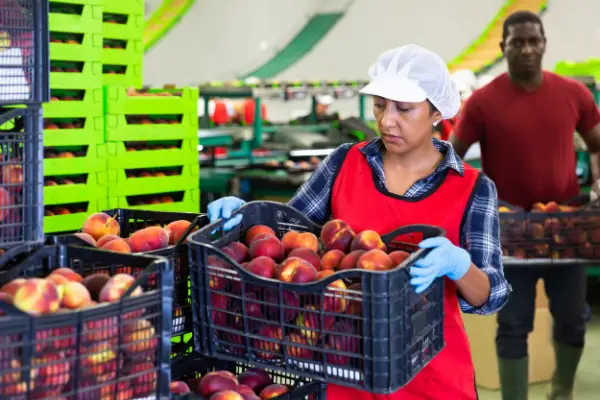 Since the beginning of the COVID-19 pandemic, more people are talking about the food supply chain than ever. The food supple chain is made up of five stages that describe the process of producing to distributing and consuming food items. With recent events, the food supply chain has become more complex. As a business operator in the food industry, it’s important to understand the food supply chain. Read on to learn more about the five main stages of the food supply chain.
Since the beginning of the COVID-19 pandemic, more people are talking about the food supply chain than ever. The food supple chain is made up of five stages that describe the process of producing to distributing and consuming food items. With recent events, the food supply chain has become more complex. As a business operator in the food industry, it’s important to understand the food supply chain. Read on to learn more about the five main stages of the food supply chain.
Production Of Raw Material
The first stage of the food supply chain is the production of raw materials. Farmers grow produce, cultivate livestock and harvest materials. This stage of the food supply chain has its own local guidelines that must be followed depending on the product. For example, harvesting wine grapes has its own sustainability legislation that differs from India to Italy. The first stage of the supply chain might also include elements of storage operations before the food is sold or shipped to be processed. The production of raw material is the beginning of the food supply chain.
Processing Material Into A Product To Sell
The second stage of the food supply chain requires a supplier to process the raw materials into something consumers can buy. Many countries have strict safety requirements for food sales. Further, many grocery stores have guidelines for fresh produce that are purely for aesthetics. Processing animal meat is an extensive process that includes the slaughtering, butchering and packaging of different types of livestock. Some plants like wheat must also be processed by milling to create products like flour. This stage also includes packaging, either for consumer use or for the final distributor to receive in bulk. They can also add a trademark number on the products. In short, suppliers take different actions to prepare raw materials for sale in the second stage of the food supply chain.
Distribution Of the Processed Materials
Next, a distributor will transport the processed material from the processor to the retailer or grocery store. Distributors can ship locally or across countries. Products that expire faster must be quickly transported. Two ways to source products that expire quickly are to accelerate the transportation via air distribution or to use a local producer and processor. Products like grains that take longer to expire are often transported in bulk by ships internationally. This process is tracked and measured by a term “food mile”. The distance from the first step, to the processor through the distributor are all counted towards the food mile total. The distributor is often the most responsible for reducing the amount of total food miles. The third stage of the food chain requires a distributor to ship the processed material to a retailer in the most efficient way possible.
Sale Of The Food Product
Following the distribution to retailers and food service providers, the product must be sold to consumers. Retailers come in a few varieties. They also print booklets to advertise the product, but food is mostly sold in grocery stores, but can also be delivered to consumers via vending machines or restaurants. The food supply chain includes more conventional foods like produce and meats as well as less often thought of products like chocolate bars found in various outlets. At this stage, the final product is presented in a fashion where consumers can directly purchase the product. This stage involves marketing techniques like staging to produce profit. The second to last stage of the food supply chain is the sale of the food product.
Consuming The Product
Finally, the end product is consumed by a customer. This final step is the same as investing in diamonds that can largely influence the way the first four is structured. After all, a food supply chain is responsible for growing and delivering enough food for each household to sustain itself. A consumer’s decisions and needs are the demand for a product The food supply chain will change according to the behavior in this stage. An inefficient supply chain with too much product will create waste. In severe circumstances, a food supply chain with too little product can produce a famine. The final stage of the food supply chain is the use or consumption of the product.
The food supply chain is made up of 5 main stages. First, the raw materials are grown or cultivated and then harvested. Next, they are sent for processing, which creates a product that is ready to be consumed. Third, the ready product is distributed to different outlets. Then, the product is sold to consumers either prepared, or as something ready to cook. Finally, a customer consumes the product after it is finally prepared. The above points demonstrate the five stages of the food supply chain.
 Business First Family Business, Accounting, Finance, Investing, Marketing And Management
Business First Family Business, Accounting, Finance, Investing, Marketing And Management